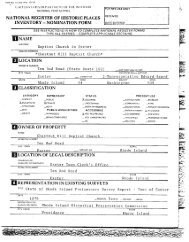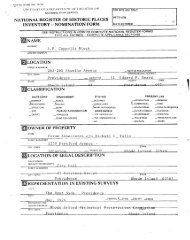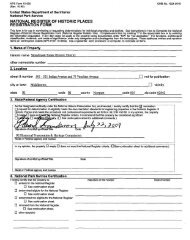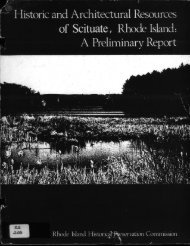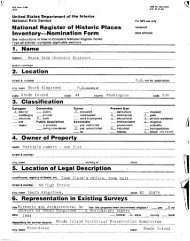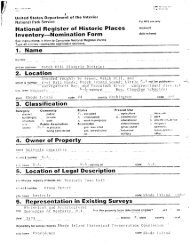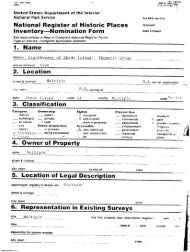1 Dr. Jonathan Prude, Emory University “The Great Transformation ...
1 Dr. Jonathan Prude, Emory University “The Great Transformation ...
1 Dr. Jonathan Prude, Emory University “The Great Transformation ...
You also want an ePaper? Increase the reach of your titles
YUMPU automatically turns print PDFs into web optimized ePapers that Google loves.
12properties be comfortably integrated with the communal administration of rural townships? Oragain: How should the authority flowing from business enterprises be meshed with localcommunity governance. Often these questions only lurked beneath the surface. Occasionally,though, they came to the fore. In 1832, having determined that he in fact no longer wanted toshare jurisdiction over his mill villages in Dudley and Oxford with the town meetings of thosecommunities, Samuel Slater petitioned the Massachusetts legislature to set aside his factoriesinto a new township: the township of Webster, Massachusetts. Faced with losing significantresources and tax revenues, Dudley and Oxford naturally resisted. But in doing so, the townsreached beyond self-interest and, evoking the never-quite-stilled concerns aboutindustrialization’s threat to independence, made a basic point about governance in a Republic.Since the new town would be almost entirely made up of mill workers “dependent on one man[i.e. Slater],” Dudley and Oxford argued, its incorporation “would be...contrary to the spirit ofour free institutions and republican principles. [For i]t would be investing an individual, notmerely with [managerial] rights but with municipal authority--a power, too great ...to bewielded...under a free government.” In the event Webster was created. But the position Dudleyand Oxford had staked out--that “free government” meant the “municipal authority” of NewEngland communities should not devolve entirely into “managerial rights”--this position spoketo profound issues of town/business relations. And directly or indirectly, overtly or implicitly,that issue reverberated across the hinterland during these and indeed subsequent years.But what about life and labor inside the mill villages themselves? What more can we sayabout how the local <strong>Great</strong> <strong>Transformation</strong> played out inside these enclaves? To begin with, whowas employed in the southern New England factory settlements in this era? While typicallywhite and native-born, they were generally more varied than the single young women favored byWaltham-style factories. To some degree, the mill villages of southern New England recruitedemployees from nearby. But operatives in any given mill village also commonly drewindividuals from across considerable distances. There were unattached individuals. But becausethey followed British employment precedents and (we should add) because there were few







